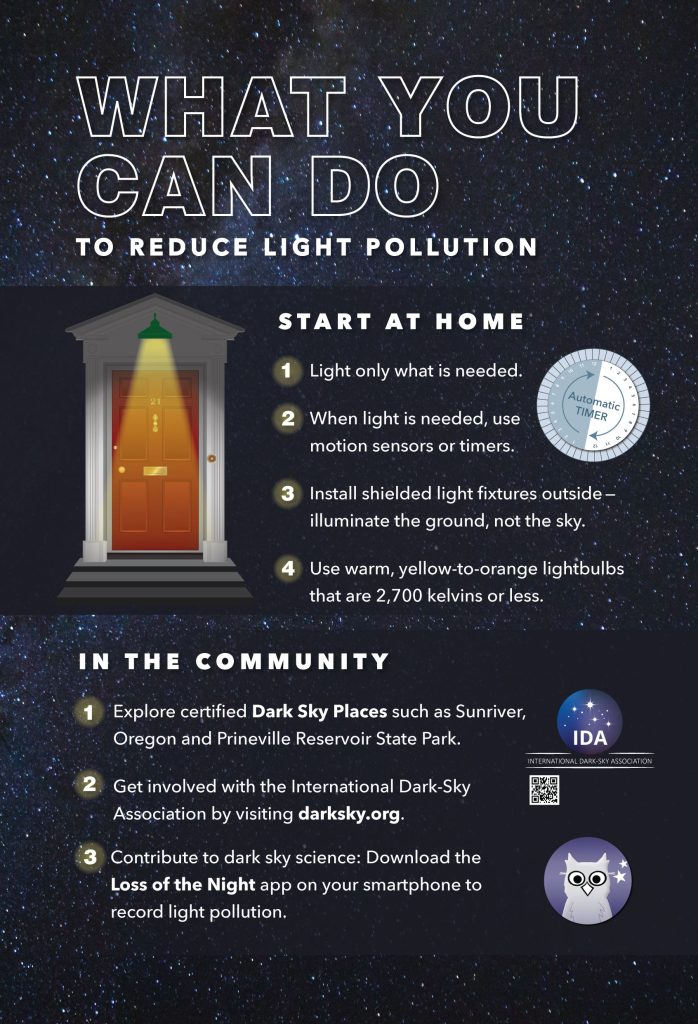Dark Sky Research at the High Desert Museum
Almost 100 percent of Americans live in light-polluted environments, while 80 percent cannot see the Milky Way.
The Problem with Light Pollution
The High Desert boasts some of the darkest night skies in the United States. But increasing light pollution emanating from both urban centers and rural communities threatens the health of species that depend on the dark. Like clean water and fresh air, dark skies are a type of natural resource essential to healthy ecosystems.
Light pollution is the result of an excessive amount of light emanating from homes, businesses, billboards, commercial sites and cars. Light pollution can travel dozens of miles from its original source, disturbing species that live in remote regions otherwise free from human development.
Scientists are learning that excessive and poorly directed artificial light at night is disrupting the lifecycles of thousands of species, including humans. For example, millions of birds die at night each year in our cities as they become disoriented by the light, often colliding into brightly lit buildings. The same is true for declining insect populations, which are drawn towards artificial lights and away from traditional habitat. And evidence is mounting that human health is impaired by excess light, including sleep disorders and incidence of cancer.
Certain areas of the High Desert still have pristine night skies, but that natural resource is dwindling with population growth. Globally, light pollution is escalating at a rate of more than 2 percent per year, while light pollution in Oregon’s Deschutes County is increasing at an even faster pace.
What We’re Doing to Help
The High Desert Museum has installed two instruments to help track the growth of the region’s artificial light. The first instrument is a Sky Quality Meter, which continuously measures the amount of light pollution detectable at night sky. The second instrument is an All-Sky Camera, which captures a nightly image of the sky above the Museum. Every few months, the Museum sends this light-pollution data to the Oregon Chapter of the International Dark-Sky Association, an organization that is compiling measurements from across the state to track and reduce its growth.
There is some good news about light pollution: it’s easier to solve than other types of pollution. Individuals, businesses and communities can reduce light pollution by turning off lights, installing timers or motion sensors or casting lights downward. Essentially, the goal is to place light only where it is needed for visibility and security.
Watch for more details about the sky quality meter and all sky camera in future postings. And for more information on the importance of dark skies, and a guide for visiting dark sky sites in the region, visit International Dark Sky Association (IDA). See www.darksky.org.
The High Desert Museum curated an original exhibit in 2022, Vanishing Night: Conserving Dark Skies in the High Desert. Read more about the exhibit!
Webpage banner: Jackson Lake in Grand Teton National Park, photo by John Mikkelson.

